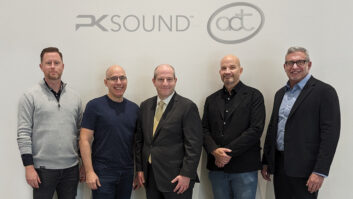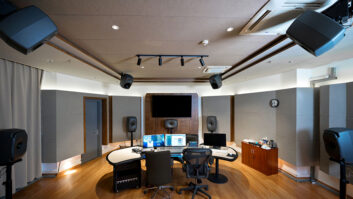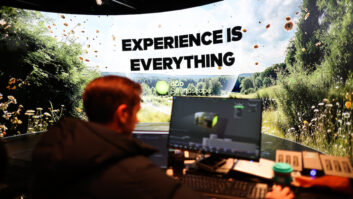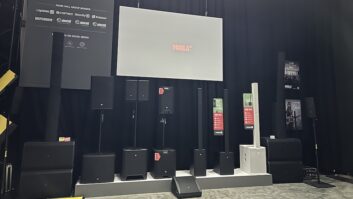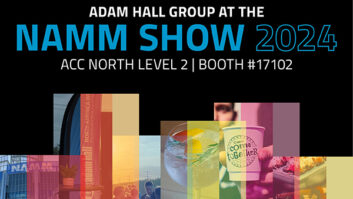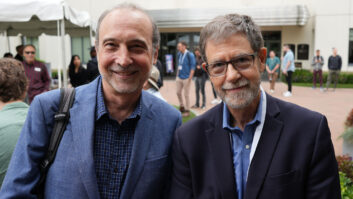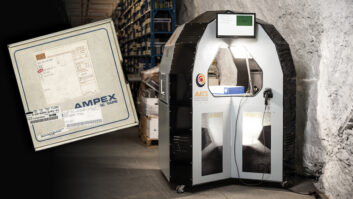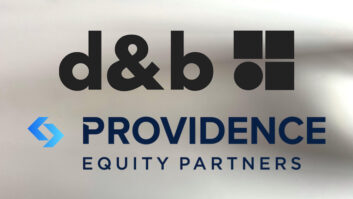Things are busting out all over at 5.1 Entertainment. Positioned as a key player in the world of DVD-Audio, the company has mixed and mastered over 40 classic and contemporary albums for 5.1 surround DVD music release in the past year alone; current plans are to continue to release 10 DVD-Audio discs per month. June’s highly publicized release by Warner Bros. Records’ of the DVD-Audio version of Fleetwood Mac’s Rumours, which was produced and mixed by 5.1 Production Services president Ken Caillat, has also upped the ante for the young company.
Less than three years old, 5.1 has expanded rapidly and currently employs a staff of 37, all of whom work in offices and studios spread out over two floors of a West Los Angeles industrial complex. The three divisions of the company include digital production services, comprising recording/mixing studios and video production; graphics and multimedia design; and three in-house record labels. On any given day, surround projects in progress at the facility might include remixes of major-label catalog material ranging from Alice Cooper to Billy Idol to Sting, work on Nine Inch Nails’ latest video, a film mix for the opening sequence of Moulin Rouge, and recording or mixing sessions for artists such as Venice Underground, Bird3, Dishwalla, the Big Phat Band and Aaron Neville, all of whom are signed to either immergent, Electromatrix or Silverline, the three labels under the 5.1 Entertainment umbrella.
It wouldn’t be inappropriate to call 5.1 Entertainment co-founder Caillat a visionary. A producer/engineer best known for his work with Fleetwood Mac (Rumours, Tusk, etc.), he was an early aficionado of surround and even designed his own binaural microphones. With the advent of enhanced CDs and educational CD-ROMs, Caillat quickly recognized the new potential for audio and set about making a surround sound demo of Fleetwood Mac material. To accomplish that, he enlisted the help of former Fleetwood tour manager Leo Rossi. The two hit it off, and in 1992, formed a company called Highway One, which, in 1998, added John Trickett as president and CEO and morphed into 5.1 Entertainment.
DVD-Audio discs produced by 5.1 Entertainment feature 24-bit/96k sampling, and are compatible with AC3, making them playable on the nearly 10 million DVD players currently estimated to be in U.S. households.
The two production studios at 5.1 both house Soundtracs digital consoles, a choice that was initially dictated by that company’s pioneering position in the industry. Studio A is fitted with a 160-input, 64-fader DPC-II, and Studio B with a 160-input, 48-fader DPC-II. All of the production rooms at the facility feature M&K self-powered MPS-2510P monitors.
“A lot of consoles being used for surround in traditional studios have been revamped for the genre,” comments chief engineer Claus Trelby. “That’s not so with the DPC. It was originally made as a post console. We were the first to pick up on it for music mixing, because we knew it was capable of doing what we wanted. We’ve done a lot of work with the company, and it’s now a very musical console — kind of like a little Ferrari — very easy to operate, and everything is done on touchscreen. There are 160 inputs and outputs; that’s always the same no matter how many physical hardware faders you actually purchase.”
As with other users of digital consoles, the staff at 5.1 enthuses over the Soundtracs’ instant “20-second” total recall, both for its flexibility in moving from song to song, and because a whole album can be roughed out by the mixer before fine-tuning with the artist, if necessary.
“The beauty of it is that we offer the artist the ability to come in at the end,” says Caillat. “They don’t have to endure the whole grueling two weeks of the mix, where they have nothing to do but eat pizza and play pinball while they’re waiting.
Archiving, a major component of the process, is currently to Exabyte. “There is still no proven, solid, digital storage medium for 30 years down the road,” says Trelby. “Our plan is that every five years, we’ll go back and make sure that all our archiving is intact. A big part of this business is archiving — some of the old tapes we’ve used have been ‘last play.’ For example, we had Frank Sinatra tapes that were not well stored. All of a sudden, all the oxide was sitting on the heads of the tape machine — it really was the last true play of that tape. So archiving is extremely important to us; obviously, as technology moves, we are going to follow it.”
Transferring program material, especially of vintage tapes, is an art in itself. Projects arrive at the facility on all sorts of formats, and are transferred to Euphonix R-1 hard disk recorders. Apogee PSX-100s are used for 96kHz conversion from analog.
“We always stay at the top, bringing it in at 96 kHz, even if some of the source comes from 48-track digital,” notes Trelby. “Once we get it into the board and we’re running at 96 to delays and effects, it makes a difference. You’ve got extra dynamic range, and, in spite of what some people think, it really does come out more than 48. As soon as you’re going into EQs, etc., there are harmonics generated in a spectrum that didn’t exist in the original. You do get extra space.”
It is company policy to work only from original masters, and the staff goes to great lengths to ensure that they find those originals, on occasion flying an R-1 around the country to make transfers on site.
“We are audio detectives looking for these multitracks,” laughs Caillat. “We don’t want to know about a safety copy or a DA-88. There have been great tracks we were approved to do that we’ve passed on because they weren’t original. We would like to make a plea, by the way. There are actually multitracks out there in people’s garages, like those Barbra Streisand tapes that were found in the street. If you see some, call us, call the label — call somebody! Because there are gold nuggets out there that could rot away in some hot garage!”
The film music side of 5.1 has also been seeing action lately, with most film work handled by VP of audio production Gary Lux, whose background includes three years as head scoring mixer at Universal Studios, as well as work with Sting, Aaron Neville and on numerous movies.
“Music is often delivered to dubbing stages in LCR stem formats,” Lux notes. “Often, that doesn’t translate very well in 5.1. We get calls to help out on special musical pieces, like for Never Been Kissed, A Knight’s Tale and Hollow Man, among others, and for the opening segment for Moulin Rouge. For Moulin Rouge, I think the director, Baz Luhrmann, was quite blown out by what we do. It’s a larger-than-life movie, and when he listened to the work we’ve done, he realized that 5.1 was a music format that matched his visual expectations. In the opening scene, where you go into the Moulin Rouge and Lady Marmalade is playing, and Nirvana is playing and Fatboy Slim — all at the same time — they were going, ‘How are we going to mix this?’ Our experience really helped out.”
Content creation for DVDs has developed as a natural progression for the company, which now also provides visuals, from graphics to interviews and concert footage. For example, for Aaron Neville’s Silverline DVD release of his latest CD, Devotion, the 5.1 team provided a video crew who traveled to New Orleans to film interviews with friends and family and a performance by Neville at the Angola State Penitentiary.
Artists signed to 5.1 labels are also encouraged to think about creating music in surround. New group Rambient, on the immergent label, was set up from the get-go with a 5.1 surround system to incorporate the genre in its compositions.
“I think what’s most exciting is what we are doing with our own artists,” Caillat comments. “We have them come in and listen to music before they start their project, and they really get it. That kind of creativity starting out lends itself to so many opportunities.”
“Every musician who walks in the door and listens, within two bars, basically throws up their hands and says, ‘How am I going to listen in stereo again?’” adds Lux. “We realize that great songs are what it’s all about. But there’s so much more space in this genre for the artist to realize what they originally heard in their heads. It’s like a creative shot in the arm.
“We already know, musically, that it’s an incredible experience,” Lux continues. “It’s our challenge to get it to the public, to heighten their awareness. It’s exciting for us, and we are also very user-friendly. We share as much knowledge as we can with others who are trying to do this, because we want the platform to go. It’s an education process not only for the consumer, but for record retail. But, with DVD movies a proven hit, they now know that once the customer hears it, they’re hooked.”
